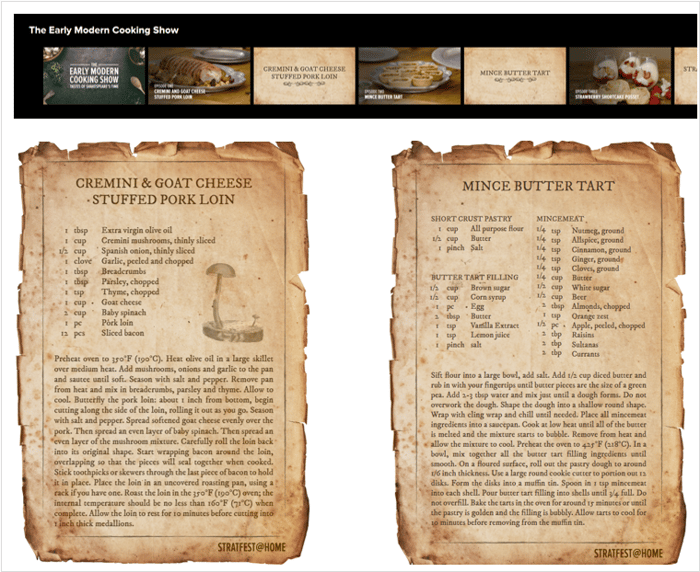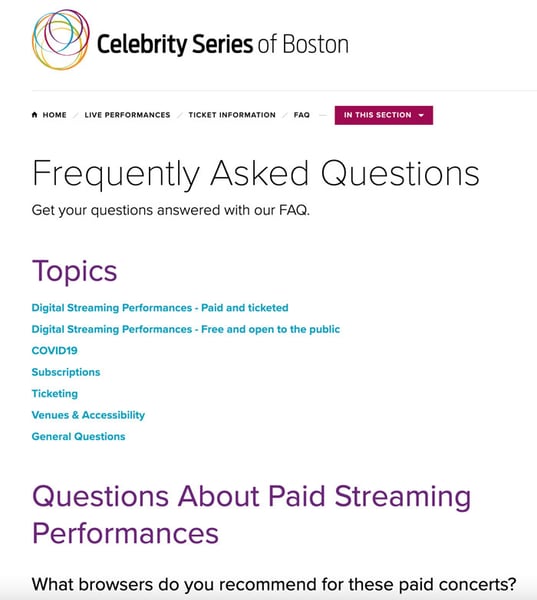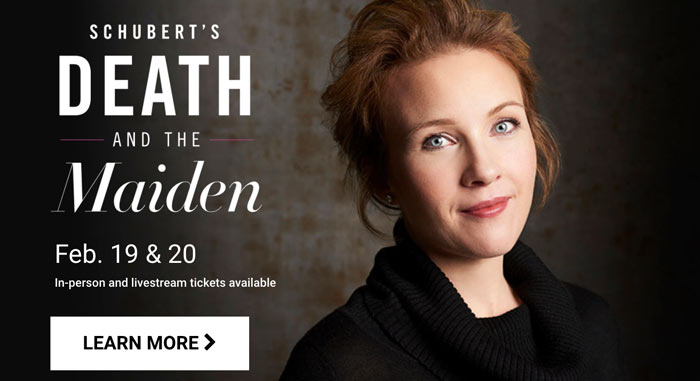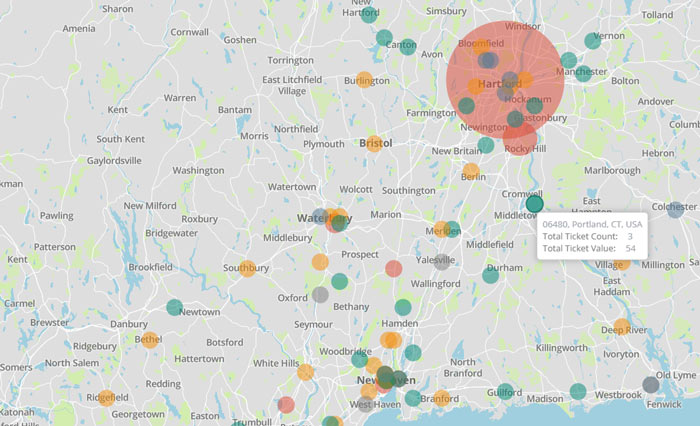Business Strategy
Digital
Virtual Experiences
Article
Insights & Innovation
bc1d95ba-ba25-46cd-91f0-9188f555c5d1
5 min
https://edge.sitecorecloud.io/tessituraneab9a-tessiturane5642-staging-5396/media/Images/Discover-Images/Thought-Leadership/Building-engagement-virtual-experiences/laptop-etienne-boulanger-aafOjsh-9jU-unsplash-768x465.jpg?h=465&iar=0&w=768
Build an intentional customer journey to cut through the Zoom fatigue
Five tips for building engagement with virtual experiences

Chief Growth Officer, Tessitura
Five tips for building engagement with virtual experiences
2/9/2021
5 min
Zoom fatigue has hit.
We’ve been physically distancing for months on end. And yet, in many places, virtual experiences are still the primary way that cultural organizations can connect with their audiences.
Against this backdrop, it can feel challenging to deliver quality virtual experiences while continuing to build customer engagement. But it’s possible! Your mission is still the same, even if the way you’re fulfilling it looks different. These five tips will help you leverage your existing tools and experience to stay grounded in your organization’s unique mission and keep your customer relationships strong.
1. Be intentional about mapping the customer journey
Before the pandemic, organizations were successfully engaging audiences by intentionally mapping out the path from unknown to participant to supporter. That process will serve you just as well today. A customer engagement roadmap is a powerful tool for bringing your CRM strategy to life: the framework helps you define the specific interactions and goals for each customer and customer segment.

Virtual experiences might feel new, but they are just as much a part of your customer engagement roadmap. Envision how you want these audiences to engage over time, and build that into your customer journey planning. How you will connect with different segments before and after a virtual experience?
Keep in mind that you may have a whole new long-distance audience, since virtual programming can be accessed from anywhere. How will you engage your new far-flung audiences differently from your local audiences? Intention is the key to success.
2. Create experiences that engage your participants in new ways
We all know first-hand that engaging on screen has a different quality from engaging in real life. As you are planning your virtual experiences, think creatively about how you can engage the participants in new ways. Can you incorporate social interaction? Have you built in learning opportunities? Can you send them something physical they can have at home to enrich the experience?
Stratford Festival chose to deliver their mission digitally through Stratfest@Home, a program that champions the art of storytelling and celebrates the craft of theater-making. Their Early Modern Cooking Show demonstrates the preparation of famous Shakespearean dishes, complete with recipe downloads for participants to tackle in their own kitchens.

3. Offer a familiar and flexible buying experience
Your customers already love you, even from a distance. They know your brand and are familiar with the buying experience. When you invite them to purchase virtual experiences, make sure the buying experience will feel familiar to them — in both the look of your brand and the ease of the transaction.
While the past year has taught all of us to expect the unexpected, it’s also created the expectation of increased adaptability. With that in mind, offer your customers as much flexibility as possible when purchasing virtual events. This can take several forms, from pay-what-you-wish pricing to the ability to apply funds from previously canceled events. For experiences that are time-specific and not on demand, make sure customers can let you know if their plans have changed.
Finally, expect new audiences who haven’t visited your venue in the past, and make sure your website purchase path is welcoming and clear for them as well as for your existing customers. There’s no such thing as overcommunicating when it comes to any technical requirements, time restrictions, and any other policies that might come as a surprise to either new or returning audiences.
The team at Celebrity Series of Boston created a comprehensive FAQ page for their website so virtual event participants can see how to view content, technical information, and troubleshooting tips.

4. Build on virtual experiences
As you plan your virtual events, think about how you can extend the virtual connection during or after the event. Can you capture the excitement from an event and translate it into a donation? Can you offer hybrid events, where some audiences are virtual and others are in person?
State Theatre New Jersey made a simple $5 donation ask during their online trivia night. To their surprise, the average donation came in at around $23 — more than four times the ask amount.
The Houston Symphony is offering live performances in a hybrid format: in person, physically distanced with reduced capacity, with a livestream option for virtual audiences at home.

5. Experiment, analyze, and iterate
The shift toward digital has pushed all of us to try new things. As you are planning your virtual experiences, define what success will look like for your specific programs and audiences. Then use that definition to map out the data points you’ll need to analyze your efforts.

After each event, evaluate where you exceeded expectations and where you fell short. Then make some changes and try again. Over time, you’ll understand what works best for engaging your customers through the experiences you offer.
By keeping your audiences at the center of your planning, you can use virtual experiences to deepen engagement with your customers — and create new audiences — even from a distance.
Top photo by Etienne Boulanger on Unsplash
Topics
Business Strategy
/Digital
/Virtual Experiences

Five stories of success we heard at TLCC
Arts & Culture / COVID-19 / Community Engagement / Digital / Memberships / Ticketing & Admissions / Virtual Experiences
Institutions from London to Belfast to Dallas have strengthened engagement in many inventive ways

Why Arts & Culture is Essential Today
Arts & Culture
Healing the world requires five human traits: arts & culture delivers them all.

A contactless customer journey with a personal touch
Arts & Culture / Business Strategy / COVID-19 / Technology / Ticketing & Admissions
How Georgia Aquarium creates a visitor-focused experience
